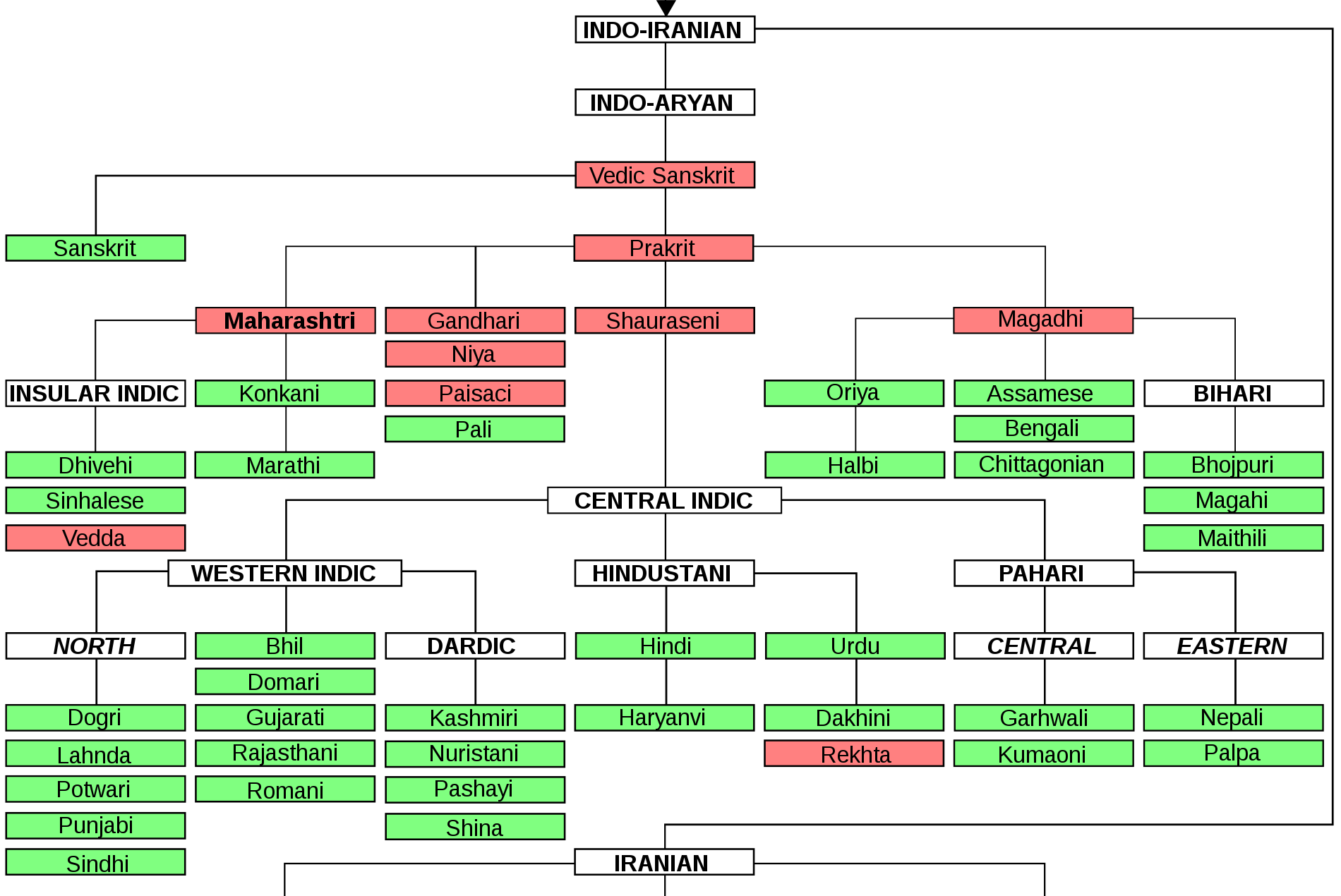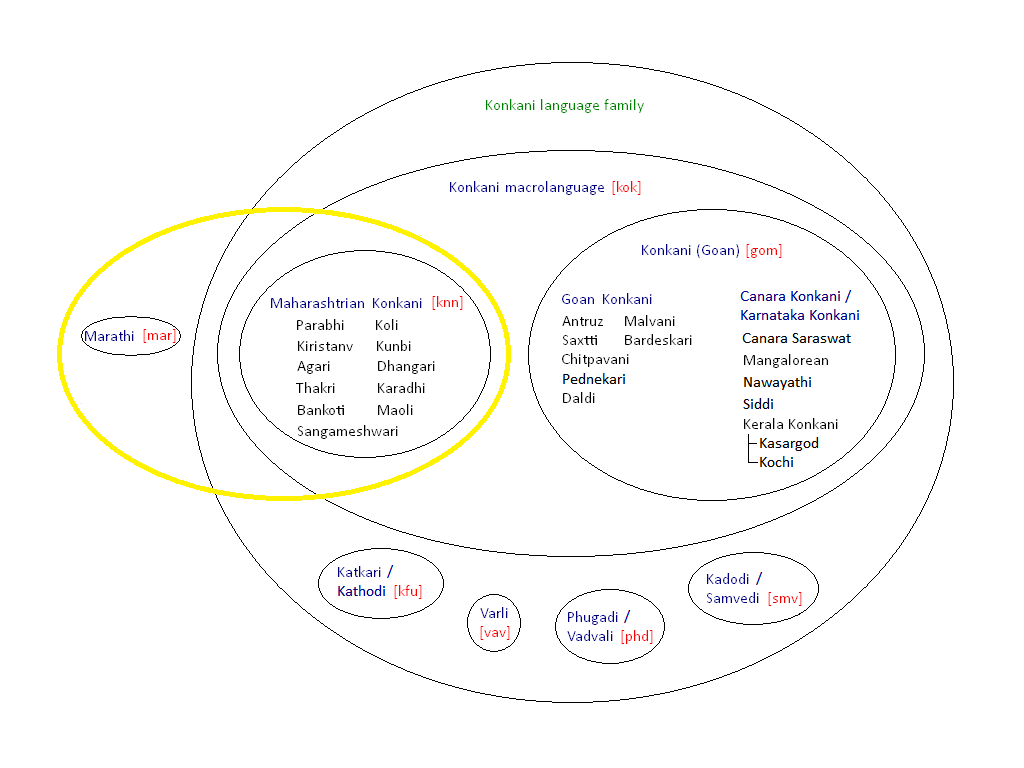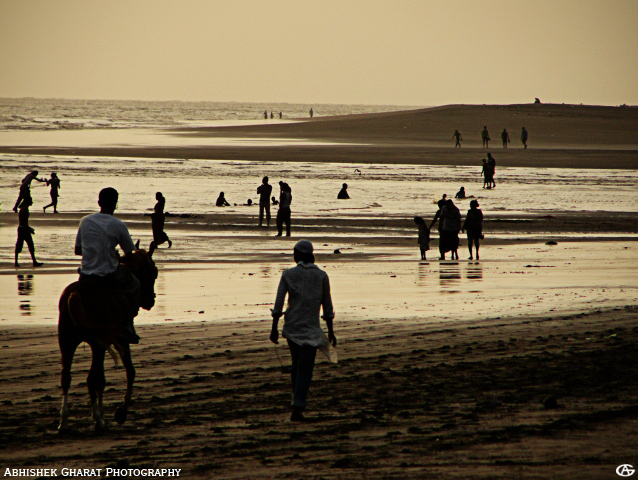|
Kadodi Language
Kadodi, Samavedi is the language spoken by the Samvedi Brahmin and Kupari community in Vasai, Maharashtra, India. The language has evolved as an intermediate dialect of Marathi and Konkani, incorporating significant lexical and phonetic influences from Portuguese as well as elements found in Goan speech patterns. Origin and Historical Background Kadodi developed over centuries through sustained interaction among local communities. The Kupari people trace their ancestry to Samvedi Brahmins, Goan Konkani Brahmins, and Portuguese New Christians—a legacy of intermarriages during the Portuguese colonial period. These historical contacts introduced Indo-Portuguese loanwords and distinct pronunciation features, resulting in a dialect that reflects a blend of Marathi, Konkani, Goan, and Indo-Portuguese influences. Although Kadodi has traditionally been an oral language without an independent literary tradition, it is commonly rendered using the Devanagari script Devanagari ... [...More Info...] [...Related Items...] OR: [Wikipedia] [Google] [Baidu] |
India
India, officially the Republic of India, is a country in South Asia. It is the List of countries and dependencies by area, seventh-largest country by area; the List of countries by population (United Nations), most populous country since 2023; and, since its independence in 1947, the world's most populous democracy. Bounded by the Indian Ocean on the south, the Arabian Sea on the southwest, and the Bay of Bengal on the southeast, it shares land borders with Pakistan to the west; China, Nepal, and Bhutan to the north; and Bangladesh and Myanmar to the east. In the Indian Ocean, India is near Sri Lanka and the Maldives; its Andaman and Nicobar Islands share a maritime border with Thailand, Myanmar, and Indonesia. Modern humans arrived on the Indian subcontinent from Africa no later than 55,000 years ago., "Y-Chromosome and Mt-DNA data support the colonization of South Asia by modern humans originating in Africa. ... Coalescence dates for most non-European populations averag ... [...More Info...] [...Related Items...] OR: [Wikipedia] [Google] [Baidu] |
Maharashtra
Maharashtra () is a state in the western peninsular region of India occupying a substantial portion of the Deccan Plateau. It is bordered by the Arabian Sea to the west, the Indian states of Karnataka and Goa to the south, Telangana to the southeast and Chhattisgarh to the east, Gujarat and Madhya Pradesh to the north, and the Indian union territory of Dadra and Nagar Haveli and Daman and Diu to the northwest. Maharashtra is the second-most populous state in India, the third most populous country subdivision in South Asia and the fourth-most populous in the world. The state is divided into 6 divisions and 36 districts. Mumbai is the capital of Maharashtra due to its historical significance as a major trading port and its status as India's financial hub, housing key institutions and a diverse economy. Additionally, Mumbai's well-developed infrastructure and cultural diversity make it a suitable administrative center for the state, and the most populous urban are ... [...More Info...] [...Related Items...] OR: [Wikipedia] [Google] [Baidu] |
Kupari
Kupari () referring to the father of one's godchild; word derived from ''Kumpari'' and feminine being ''Kumari'' or Portuguese ''Comadre'') or Samvedi Christians are a Roman Catholic Brahmin sub-group of the Bombay East Indian community. This community is concentrated mostly in Bassein (Vasai) (), India, which is about north of . See also * * Samvedi * |
Indo-Iranian Languages
The Indo-Iranian languages (also known as Indo-Iranic languages or collectively the Aryan languages) constitute the largest branch of the Indo-European language family. They include over 300 languages, spoken by around 1.7 billion speakers worldwide, predominantly in South Asia, West Asia and parts of Central Asia. Indo-Iranian languages are divided into three major branches: Indo-Aryan, Iranian, and Nuristani languages. The Badeshi language remains unclassified within the Indo-Iranian branch. The largest Indo-Iranian language is the Hindustani language (Hindi-Urdu)."Hindi" L1: 322 million (2011 Indian census), including perhaps 150 million speakers of other languages that reported their language as "Hindi" on the census. L2: 274 million (2016, source unknown). Urdu L1: 67 million (2011 & 2017 censuses), L2: 102 million (1999 Pakistan, source unknown, and 2001 Indian census): ''Ethnologue'' 21. . . The areas with Indo-Iranian languages stretch from Europe ( Romani) and ... [...More Info...] [...Related Items...] OR: [Wikipedia] [Google] [Baidu] |
Indo-Aryan Languages
The Indo-Aryan languages, or sometimes Indic languages, are a branch of the Indo-Iranian languages in the Indo-European languages, Indo-European language family. As of 2024, there are more than 1.5 billion speakers, primarily concentrated east of the Indus river in Bangladesh, Northern India, Eastern Pakistan, Sri Lanka, Maldives and Nepal. Moreover, apart from the Indian subcontinent, large immigrant and expatriate Indo-Aryan–speaking communities live in Northwestern Europe, Western Asia, North America, the Caribbean, Southeast Africa, Polynesia and Australia, along with several million speakers of Romani languages primarily concentrated in Southeast Europe, Southeastern Europe. There are over 200 known Indo-Aryan languages. Modern Indo-Aryan languages descend from Old Indo-Aryan languages such as early Vedic Sanskrit, through Middle Indo-Aryan languages (or Prakrits). The largest such languages in terms of First language, first-speakers are Hindustani language, Hindi–Urdu ... [...More Info...] [...Related Items...] OR: [Wikipedia] [Google] [Baidu] |
Southern Indo-Aryan Languages
The Indo-Aryan languages, or sometimes Indic languages, are a branch of the Indo-Iranian languages in the Indo-European language family. As of 2024, there are more than 1.5 billion speakers, primarily concentrated east of the Indus river in Bangladesh, Northern India, Eastern Pakistan, Sri Lanka, Maldives and Nepal. Moreover, apart from the Indian subcontinent, large immigrant and expatriate Indo-Aryan–speaking communities live in Northwestern Europe, Western Asia, North America, the Caribbean, Southeast Africa, Polynesia and Australia, along with several million speakers of Romani languages primarily concentrated in Southeastern Europe. There are over 200 known Indo-Aryan languages. Modern Indo-Aryan languages descend from Old Indo-Aryan languages such as early Vedic Sanskrit, through Middle Indo-Aryan languages (or Prakrits). The largest such languages in terms of first-speakers are Hindi–Urdu (),Standard Hindi first language: 260.3 million (2001), as second language: 1 ... [...More Info...] [...Related Items...] OR: [Wikipedia] [Google] [Baidu] |
Marathi–Konkani Languages
The Marathi—Konkani languages are the mainland Southern Indo-Aryan languages, spoken in Maharashtra and the Konkan region of India. The other branch of Southern Indo-Aryan languages is called Insular Indic languages, which are spoken in Insular South Asia (predominantly the island countries, Sri Lanka and Maldives). Languages The languages are: Marathi, Konkani, Phudagi, Kadodi (Samavedi), Katkari, Varli and Andh. Several of the Marathi-Konkani languages have been variously claimed to be dialects of both Marathi and Konkani. Maharashtrian Konkani A collection of dialects of Marathi-Konkani languages spoken in the Konkan region is referred to as Maharashtrian Konkani. It is often mistakenly extended to cover Goan Konkani which is an independent language. George Abraham Grierson has referred to this dialect as the ''Konkan Standard of Marathi'' in order to differentiate it from Konkani language. The sub dialects of Konkani gradually merge from standard Marathi into ... [...More Info...] [...Related Items...] OR: [Wikipedia] [Google] [Baidu] |
Samvedi
Samvedis or Samvedi Brahmins are an Indian Hinduism, Hindu Brahmin community, originating from a group of classical musicians and Indian classical dance, classical dancers. They follow Sama Veda and believed to have been originated from Odisha, India. Etymology Samvedis are also known as ''Shamedi'' near Vasai. It is a colloquial term from the original Sanskrit word Shamaneedresh (''Shaman = Entertainment'', ''Edresh = Attributed''), meaning those workers in the royal court entertaining the King. The then king appointed these people to offer music services at the Samadhi place, thus they were called Samaadhi which later became Shamedi meaning the Samadhi Temple musicians. Shamedis offer their services using musical instruments such as Sanai, Choughada, Mridanga, Bheri and Veena during the dawn and night worship at Nirmal Jagadguru Shankaracharya Samadhi Mandir, Shri Sureshwar (Suleshwar) Mandir and the Bhavani Shankara Mandir (Agassi). Their deity is Nirmaleshwar, located on th ... [...More Info...] [...Related Items...] OR: [Wikipedia] [Google] [Baidu] |
Brahmin
Brahmin (; ) is a ''Varna (Hinduism), varna'' (theoretical social classes) within Hindu society. The other three varnas are the ''Kshatriya'' (rulers and warriors), ''Vaishya'' (traders, merchants, and farmers), and ''Shudra'' (labourers). The traditional occupation of Brahmins is that of priesthood (purohit, pandit, or pujari) at Hindu temples or at socio-religious ceremonies, and the performing of rite of passage rituals, such as solemnising a wedding with hymns and prayers.James Lochtefeld (2002), Brahmin, The Illustrated Encyclopedia of Hinduism, Vol. 1: A–M, Rosen Publishing, , page 125 Traditionally, Brahmins are accorded the supreme ritual status of the four social classes, and they also served as spiritual teachers (guru or acharya). In practice, Indian texts suggest that some Brahmins historically also became agriculturalists, warriors, traders, and had also held other occupations in the Indian subcontinent.GS Ghurye (1969), Caste and Race in India, Popular Prakasha ... [...More Info...] [...Related Items...] OR: [Wikipedia] [Google] [Baidu] |
Vasai
Vasai (Konkani and Marathi pronunciation: �əsəi British English: Bassein; formerly and alternatively Marathi; ''Bajipur'') is a historical place and city located in Palghar district; it was partitioned out of the Thane district in 2014. It also forms a part of Vasai-Virar twin cities in the Konkan division, Maharashtra, India, and comes under the Police Jurisdiction of Mira-Bhayander, Vasai-Virar Police Commissionerate. The Portuguese in Goa and Damaon built Fort Bassein to defend their colony and participate in the lucrative spice trade and the silk route that converged in the area. Much of Portuguese Bombay and Bassein was seized by Marathas under Peshva rule, at the Battle of Bassein in 1739. The British East India Company at Bombay then took the area from the Maratha Empire in 1780; following the First Anglo-Maratha War. Etymology The present name ''Vasai'' is derived from the Sanskrit word ''Waas'', meaning 'dwelling' or 'residence'. The name was chang ... [...More Info...] [...Related Items...] OR: [Wikipedia] [Google] [Baidu] |
Devanagari
Devanagari ( ; in script: , , ) is an Indic script used in the Indian subcontinent. It is a left-to-right abugida (a type of segmental Writing systems#Segmental systems: alphabets, writing system), based on the ancient ''Brāhmī script, Brāhmī'' script. It is one of the official scripts of India, official scripts of India and Nepal. It was developed in, and was in regular use by, the 8th century CE. It had achieved its modern form by 1000 CE. The Devanāgarī script, composed of 48 primary characters, including 14 vowels and 34 consonants, is the fourth most widely List of writing systems by adoption, adopted writing system in the world, being used for over 120 languages, the most popular of which is Hindi (). The orthography of this script reflects the pronunciation of the language. Unlike the Latin alphabet, the script has no concept of letter case, meaning the script is a unicase, unicameral alphabet. It is written from left to right, has a strong preference for symmetri ... [...More Info...] [...Related Items...] OR: [Wikipedia] [Google] [Baidu] |





